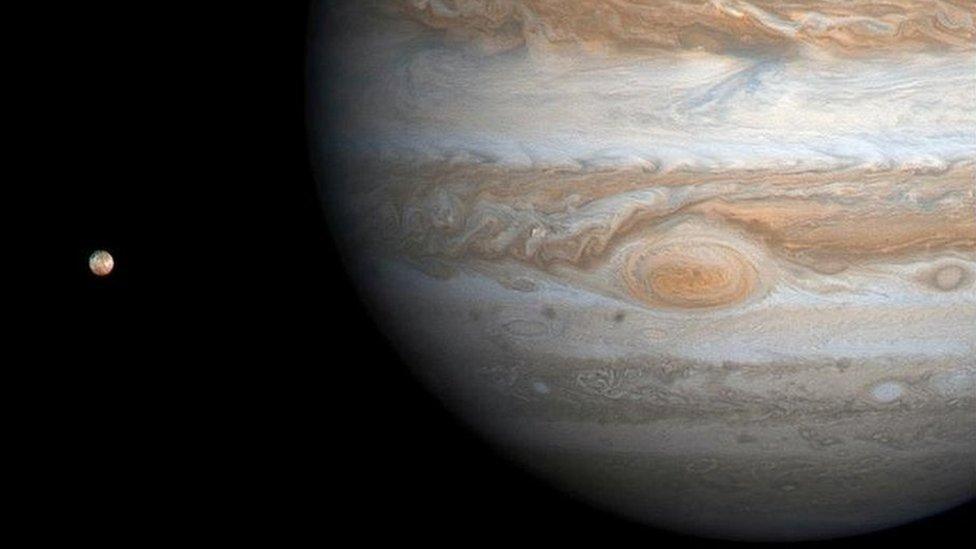James Webb: World's biggest space telescope in numbers
- Published
- comments
WATCH: Lift-off! The moment the James Webb Space Telescope is launched
The James Webb telescope left Earth on Christmas Day on its mission to show the first stars to light up the Universe.
The world's biggest telescope was launched by a European Ariane-5 rocket from the Kourou spaceport in French Guiana.
Webb, named after one of the main scientists behind Nasa's Apollo Moon landings, is the successor to the famous Hubble telescope.
Newsround takes a closer look at this incredible telescope in numbers and what it aims to do.
Price tag: $10 billion
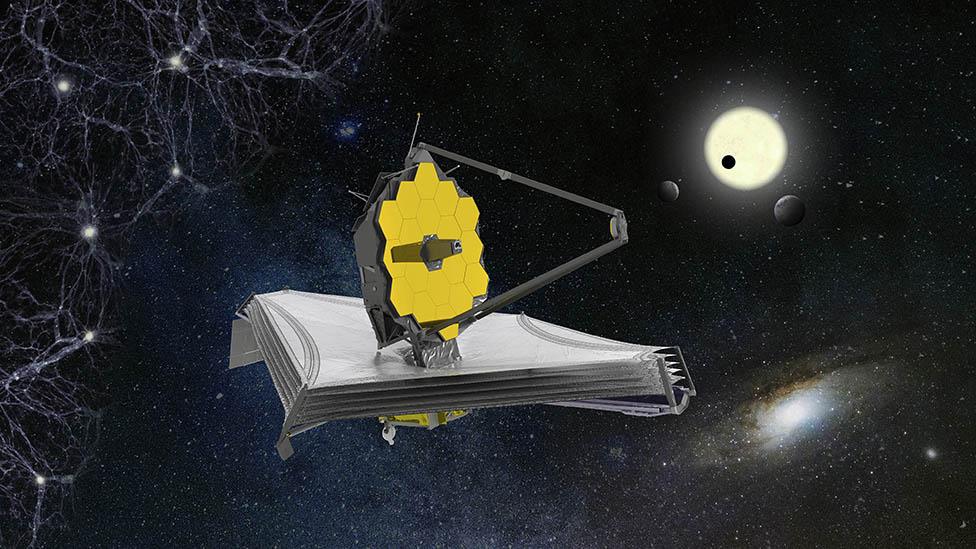
An artist's view of the James Webb Space Telescope
The project, which was started in 1989, originally aimed to launch the telescope into space in the early 2000s.
But lots of different problems with the project forced delays and caused the telescope's original budget of $1bn to rise.
The James Webb telescope eventually cost a whopping $10bn to build - that's around £7.5bn!
Mirror: 6.5 metres
WATCH: BBC science editor Rebecca Morelle explains how the James Webb Space Telescope will work
The James Webb telescope is much bigger than the Hubble telescope, which has been orbiting Earth since 1990.
Hubble collects light using a main mirror that's 2.4m (7.8 feet) across, while Webb has a big mirror that's 6.5m across the middle.
Webb is about the size of a tennis court when you take into account all of its equipment.
It's so big it had to be folded to fit inside its launch rocket!
Destination: 1.5 million kilometres
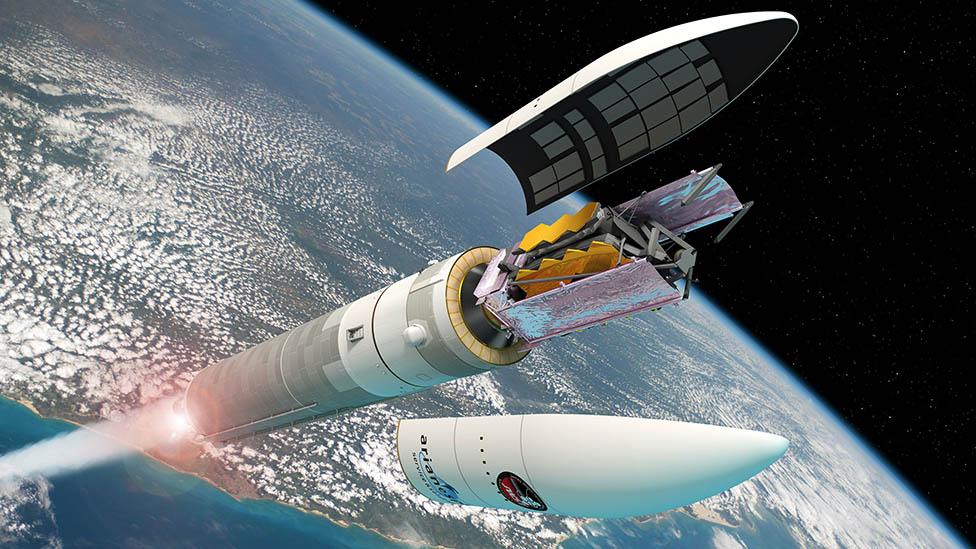
James Webb space telescope was launched on an Ariane rocket from French Guiana
Webb's launch is only the start of what will be a complicated series of activities over the next six months.
The telescope is being put on a path to an observing station some 1.5 million km away from the Earth.
When the telescope fully opens, it will be able to see just about anything in the cosmos. However, it has one main goal - to see light coming from the very first stars to shine in the Universe.
These stars are thought to have formed about 100-200 million years after the Big Bang, or a little over 13.5 billion years ago.
Lifespan: 10 years
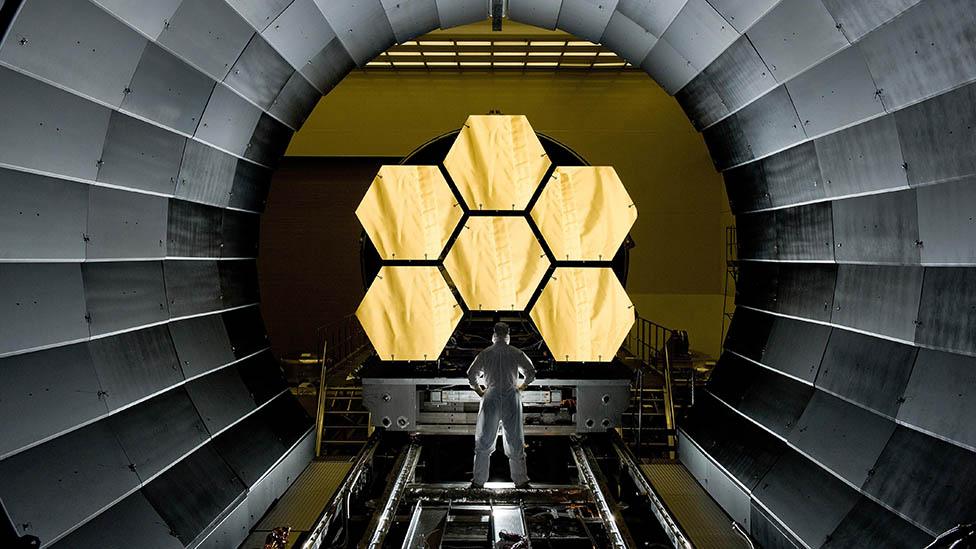
This mirror is one of the most important parts of the telescope
Webb will have a fuel supply that should keep it in orbit for 10 years.
It will be stationed too far from Earth for astronauts to reach and make repairs if needed.
But scientists all over the world will be hoping there are no problems and that the James Webb telescope will help us understand the origins of everything we see around us, and how we came to be.
Test your James Webb telescope knowledge
How much do you know about this ground-breaking piece of kit?
Try this quiz and see how you get on. Let us know how you did in the comments below.
If you cannot see the quiz, click here.
- Published22 December 2021
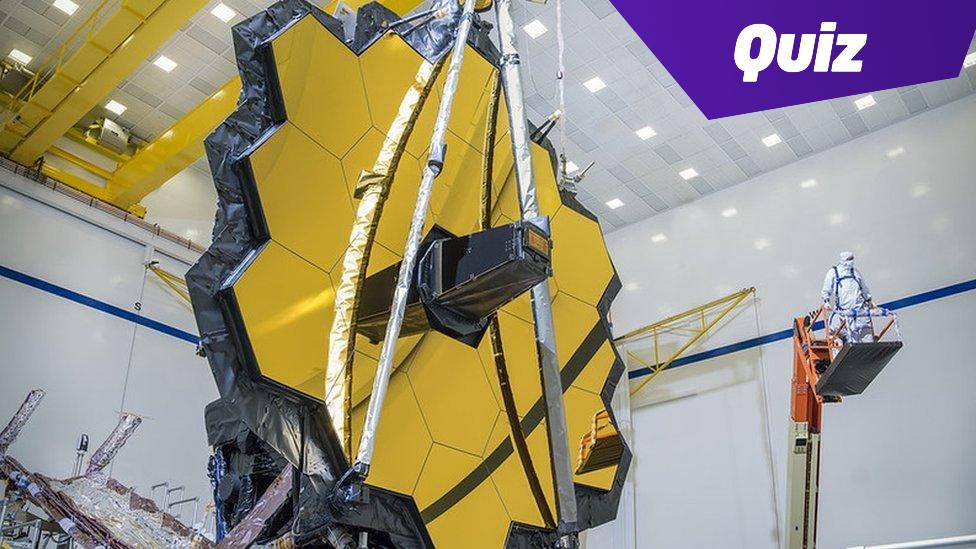
- Published20 November 2021
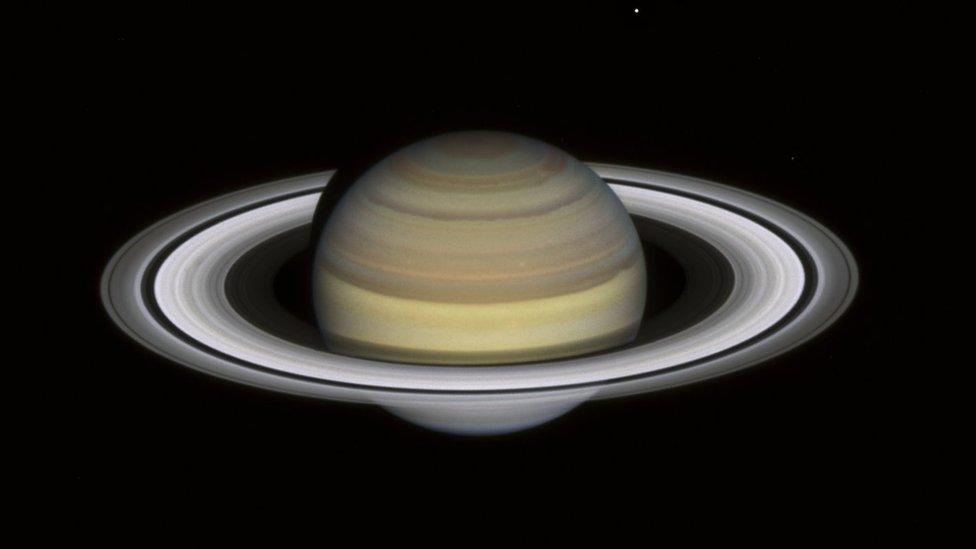
- Published19 November 2021
